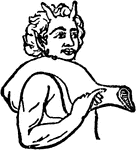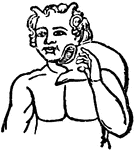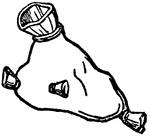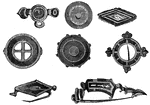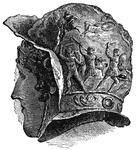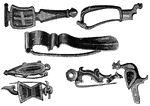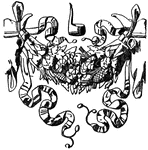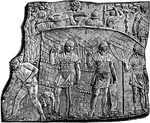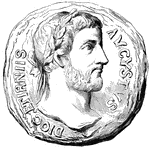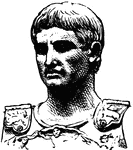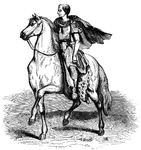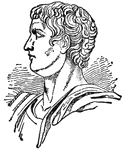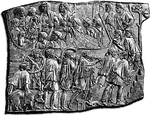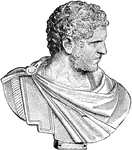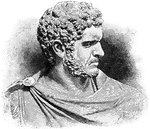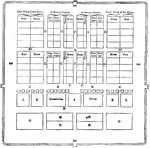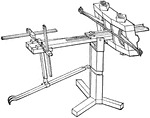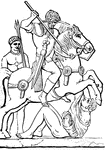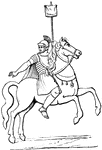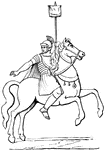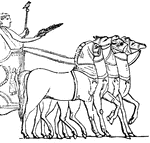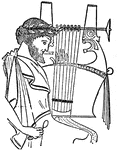This ClipArt gallery offers 396 images of the Roman Empire including culture, people, everyday life, coats of arms, and more. See also the Roman Coins, Roman Architecture, Roman Ornament, Roman Mythology, and Ancient Roman Musical Instruments ClipArt galleries.
!["After a successful summer campaign, [Caesar] made his way to the coast and cross over into Britain. He then withdrew into his winter-quarters in Gaul, but in the following year returned into the island, defeated the British Celts under their king Cassivellaunus, and reduced the country to a dependency, compelling the Britons to pay tribute and give hostages."](https://etc.usf.edu/clipart/78900/78943/78943_landing_01_mth.gif)
Landing of the Romans in Britain
"After a successful summer campaign, [Caesar] made his way to the coast and cross over into Britain.…

Byzantine court
"Constantine, the first Christian emperor, removed the capital of the world-empire from Rome to Byzantium,…
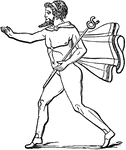
Caduceus
"The staff or mace carried by heralds and ambassadors in time of war. This name is also given to the…
Caesar Crossing the Rubicon
Julius Caesar led his legion across the Rubicon river from Cisalpine Gaul to Italy. By doing so, he…
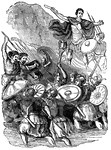
Caesar in England
"All histories of England commence with the invasion of Julius Caesar, the earliest event in that quarter…
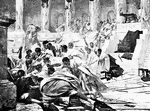
Caesar's Death
"The Death of Caesar. Naturaly such extraordinary success made him enemies, and though the city seemed…
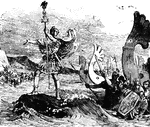
Julius Caesar
Julius Caesar heard that a little way off there was a country nobody knew anything about, except that…
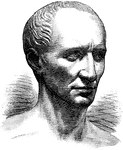
Julius Caesar
An image depicting Julius Caesar, a Roman general and statesman. He was a key component to the shift…
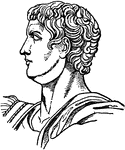
Caligula
Gaius Julius Caesar Augustus Germanicus, known as Caligula was the third Roman Emperor and a member…
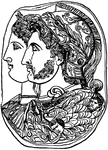
Cameo
Cameo, a term applied to gems of different colors sculptured in relief. The art of engraving on gems…

Candelabrum
"Originally a candlestick, but afterwards the name of a stand for supporting lamps, in which signification…
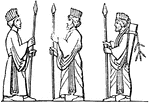
Candys
"A robe worn by the Medes and Persians over their trowsers and other garments. It had wide sleeves,…

Capitoline and Cloaca Maxima
The Capitoline Hill is a Roman hill between the Forum and the Campus Martius. The Cloaca Maxima was…
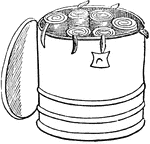
Capsa
"A box for holding books among the Romans. These boxes were of cylindrical form. There does not appear…
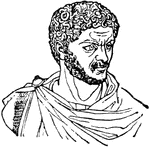
Caracalla
"Marcus Aurelius Antoninus, eldest son of the Emperor Severus, was born at Lyons A.D. 188; died in 217.…

Bust of Caracalla
Caracalla (April 4, 188 – April 8, 217. Caracallus ), born Lucius Septimius Bassianus and later called…
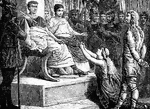
Caractacus And Claudius
Caractacus was a British Chief that had fought very bravely against the Romans. He was brought to Rome…
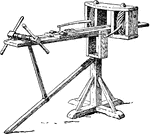
Catapult
"Catapult from the Roman military system. The Roman army was divided into legions, each of which contained…

A Catapult
A catapult as used during the Roman Empire. The catapult is an effective device used to hurl an object…
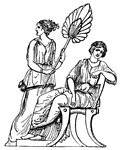
Cathedra
"A seat or chair, was more particularly applied to a soft seat used by women, whereas sella signified…
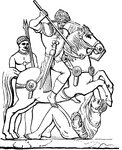
Cavalryman Charging
Charging cavalryman pictured trampling an enemy soldier and holding a spear in the Gallic War.
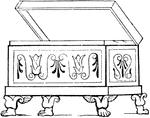
Ancient censer
"In makin Aeneas burn incense, Virgil follows the custom of his own time rather than historical verity."…
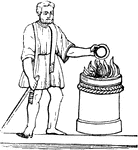
Centurio
"The commander of a centuria or company of infantry, varying in number with the legion. The century…

Roman Centurion
A Centurio was a low-to-middle ranking officer in charge of a "century," ideally 100 men but ranging…

Cestus
"The cestus used in later times, in the public games, was a most formidable weapon. It was frequently…

Boxer with cestus
"The cestus was used by boxers from the earliest times. It consisted of thongs of raw ox-hide, or of…
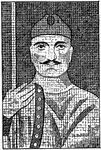
Charlemagne
The King of the Franks from 768 and the Emperor of the Romans from 800 until his death in 814.
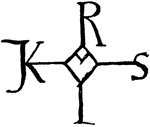
Charlemagne's Signature
"Charlemagne's signature. Only the central portion was made by Charles, the other letters, forming the…
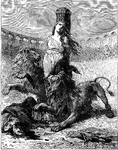
Christians Given to the Lions in the Roman Amphitheater
"More particularly was the new sect of Christians selected as the objects of vengeance. These people…

Circus Maximus
"Chariot-racing was a favorite amusement, and the great circuses were arranged especially for such contests.…
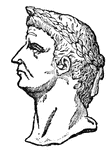
Claudius
(10 B.C.-54 A.D.) Claudius was a Roman Emperor. He accomplished many things, including the Claudian…
